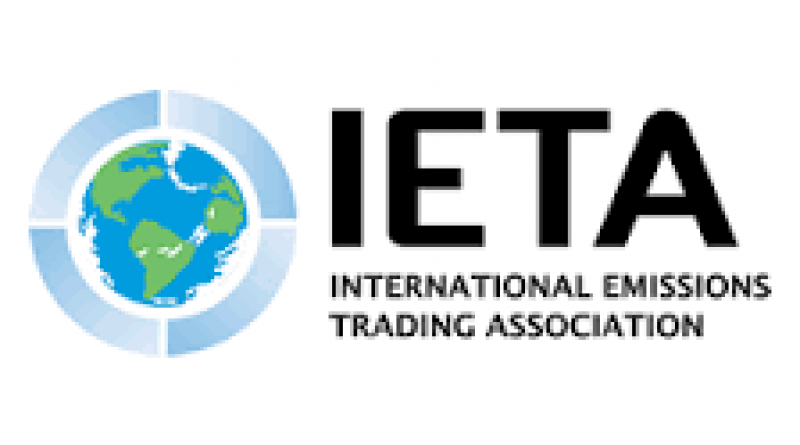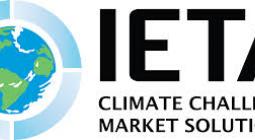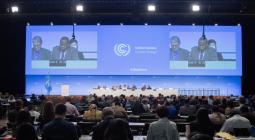Piloting for Post 2020 Carbon Markets.

PREPARATIONS FOR THE NEXT GENERATION OF CARBON MARKETS ARE UNDERWAY, AS THERE IS NO TIME TO WASTE. VIRENDER KUMAR DUGGAL OUTLINES HOW AN INITIATIVE BY THE ASIAN DEVELOPMENT BANK IS HELPING COUNTRIES IN THE REGION PREPARE FOR WHAT’S NEXT.
Article 6 of the Paris Agreement lays the foundation for post-2020 carbon markets by enabling countries to use mitigation outcomes from others toward their Nationally Determined Contributions (NDCs). The bottom-up ethos of the Paris Agreement is reflected in Article 6.2, which provides a framework for bilaterally or multilaterally developed cooperative approaches. Article 6.4, by contrast, provides for a centrally governed mechanism for mitigation and sustainable development. The establishment of two routes to use carbon markets was deliberate, to provide alternatives for countries when implementing their respective NDCs, and to make it possible for countries to design and select carbon market instruments to fit specific conditions. Many countries have indicated that they plan to use international carbon markets to support the implementation of their NDCs, including 261 of the Asian Development Bank’s (ADB) developing member countries (DMCs) in Asia and the Pacific. The objectives for engaging with international carbon markets will differ between countries, and they can use Article 6 strategically to complement, accomplish and enhance their domestic mitigation policy objectives. Self-determination and alignment with national priorities is a key part of the Paris Agreement’s bottom-up approach, and the potential ways in which countries will use Article 6 could be very different. For example, for some countries it is one instrument to achieve a conditional NDC target, for others it is about being able to link emissions trading systems or being able to offer an overachievement – ie, an emissions reduction – to the market. In the coming months, the implementation of the Paris Agreement will be high on every country’s agenda, with the first ratcheting up of NDCs required by 2020. Countries will need access to a selection of effective instruments to implement the Paris Agreement, some of which will be developed domestically, others internationally with support from climate finance, and under the framework of Article 6. These instruments, tools, or mechanisms, need to be elaborated, tested, proven, regularly reviewed and improved for ensuring their effectiveness and credibility.
Getting ready for a new global carbon market
Although Parties are yet to finalise the international regulatory framework, actors from government and the private sector can engage in pilot activities that will give them essential on-the-ground experience as part of these preparations. Pilot activities can contribute to the development and road-testing of alternative approaches for many of the elements of Article 6, in particular for those aspects of market-based cooperation that are new under the Paris Agreement as compared to the Kyoto Protocol. Pilot activities will also bring about much needed capacity in participating countries to explore a broader scope for mitigation approaches, contribute to the development of international rules through practical insights, and serve as a proof of concept by demonstrating how Article 6 can deliver mitigation through international cooperation. They will also help to develop, test, and implement tools that can enhance the ambition and effectiveness of climate action.(2)
Countries will need access to a selection of effective instruments to implement the Paris Agreement.
Pilot activities can contribute to the development and roadtesting of alternative approaches for many of the elements of Article 6
In early 2019, the ADB launched the Article 6 Support Facility (A6SF) under its Carbon Market Program to contribute to this process.3 A6SF is a $4 million facility funded by the ADB, the Government of Germany, and the Swedish Energy Agency, to provide technical, capacity building and policy development support to ADB’s DMCs. A6SF is supporting DMCs to identify, develop, and pilot mitigation actions and will provide support to help DMCs set up institutional arrangements to facilitate their participation in post 2020 carbon markets. Through A6SF, ADB will encourage innovation in the development of mitigation actions, contribute to achieving a critical mass of expertise, draw lessons from pilot activities, and enhance the ability of DMCs to contribute to international negotiations and their preparedness to operationalise Article 6. The importance of contributing to the realisation of mitigation opportunities in Asia and the Pacific is obvious. Strong economic growth means the region is responsible for a significant share of global emissions, and this share is growing. All instruments possible will be required to shift to a low-carbon development path. Being the region that historically attracted the main share of CDM projects, and is now showing leadership in carbon pricing through emissions trading schemes (Kazakhstan, PR China, Republic of Korea, Tokyo) and carbon tax initiatives (Singapore), Asia and the Pacific has an opportunity to be a leader in using market-based instruments to mitigate climate change.
What to expect
ADB is working with its DMCs to understand their approaches to Article 6, and to ensure that piloting of Article 6 activities will contribute to enhanced capacity to use markets. The DMCs will decide on the type of support they need, and the role of A6SF will be to provide support and to ensure that the experience and knowledge gained is transferred to a wider audience. The starting point for engaging with a DMC is developing a more detailed understanding of its plans for NDC implementation, and A6SF will work with DMCs to encourage them to take a strategic approach to Article 6. There could be many building blocks in such a strategy and the approach may vary depending on national circumstances and priorities. The A6SF is a facilitator and knowledge provider and, to some extent, it will be an instigator. The realities of policy and regulatory development, national capacity development and the need to secure investments, implies that the A6SF will mainly work with two approaches to piloting. On the one hand, there will be testing of implementation of Article 6 provisions and their national interpretations on mitigation activities already in a pipeline of activities. This can still mean that the activities go beyond existing NDCs by speeding up, broadening, or deepening emission reductions. On the other hand, there will be development of concepts and virtual pilots that at some point during the 2020-30 period may result in emission reductions and lead to the creation of ITMOs. A6SF can, through capacity-building and policy development support, contribute to the design and preparation of the types of activities that will require a longer time for planning and implementation, including activities that will be based on policy interventions and have a sectoral or sub-sectoral scope. As part of this it will be critical that A6SF provides practical guidance on how to design and implement pilot activities.4 What is essential for A6SF is that practical lessons are learned about what works and what doesn’t, that these are shared widely, and that they help with a prompt start for Article 6 after 2020. Market-based approaches under Article 6 include new elements that were not part of the Kyoto mechanisms. Under Article 6, up-scaling of mitigation activities is a key issue, as is the role of the host country and its decision processes. MRV, data collection, accreditation, and the overall emission impact of the activity (relevant to the NDC) will now also need to be considered on the national level and alternate approaches for how this will work need to be explored.5 The process for creating the ITMOs also needs to be tested, including what the actual tradeable unit representing the emission reductions may be (ie, the carbon credit). Beyond the national level, ways to engage and models for cooperative approaches need to be tested. The mitigation action that is the basis of the pilot activity is also a critical consideration. It could range from projects and programmes to mitigation policy instruments. It should most likely not be a completely new type of mitigation action, which would require a significant amount of work to manage from a technical point of view and become the focus of the pilot activity. Rather, it should be something that is understood well enough and is not the central focus of the pilot activity.
Pilot activities under Article 6 can build on a wealth of experience from the Kyoto Protocol mechanisms while testing new concepts and elements. One may recall that piloting was also undertaken under Activities Implemented Jointly (AIJ) as the forerunner to the Kyoto Protocol mechanisms. However, as reflected in the diagram below, the approaches piloted under AIJ were relatively simpler. In the AIJ pilot phase, there was more focus on the types of projects that could be relevant for the Kyoto mechanisms and the methodologies relating to those project categories. Piloting tended to follow the bottom-up process that was the eventual model of the mechanisms, with baseline and monitoring methodologies developed by activity implementers and then submitted for approval.
The importance of contributing to the realisation of mitigation opportunities in Asia and the Pacific is obvious.
On the Paris Agreement, several key issues, both at the political and technical level, have not yet been resolved in the climate change negotiations and this will affect countries’ ability to fully develop plans for Article 6 implementation. However, it does not mean that countries cannot implement pilot activities and learn lessons on how to best use and take advantage of carbon markets under Article 6. The fact that the rules and guidance for Article 6 have not yet been resolved makes the role of piloting even more critical. By supporting pilot activities, global and regional institutions such as ADB can help countries build experience and understanding relating to the practical implementation of Article 6 despite the uncertainty. Article 6 is complex, and pilots need to be diverse. Stakeholders’ understanding needs to be expanded beyond what was needed for the Kyoto mechanisms, through testing different cooperative approaches, and the processes and procedures for them. The Asia Pacific region is expected to play a critical role in the implementation of Article 6, contribute to enhanced ambition and achieving the objectives of the Paris Agreement. In this context, piloting a wide range of mitigation actions will play a critical role to enhance preparedness to participate in and take advantage of new carbon markets under the realm of Article 6 of the Paris Agreement. Virender Kumar Duggal is Principal Climate Change Specialist at the Asian Development Bank.
1 UN Economic and Social Commission for Asia and the Pacific. 2017. Responding to the Climate Change Challenge in Asia and the Pacific: Achieving the Nationally Determined Contributions (NDCs). Bangkok.
2 ADB, 2018, Article 6 of the Paris Agreement Piloting for Enhanced Readiness, Manila https://www.adb.org/sites/default/files/publication/469851/article-6-paris-agreement.pdf
3 September 2019
IETA




